Comedy Theory
In this post I will share with you my theory of how comedy works, and a step-by-step process to creating jokes and comedy sketches.
Here's the video version of this article:
Relevant materials:
- Template for brainstorming joke ideas
- Join our discord community to participate in our comedy writing, improv, and roleplaying workshops.
Joke Structure
Our minds think by recognizing patterns, and using them to make predictions.
When you see a pattern (“A, B, C”), your brain automatically recognizes the pattern (“Alphabet”), and makes a prediction about what comes next.

Jokes have two parts, setup and punchline. Setup leads people to recognize a pattern, which their brains automatically use to make predictions and assumptions. Punchline forces their brain to switch to a different pattern, shattering their assumptions, making it clear that predictions they've made are invalid.

For example:

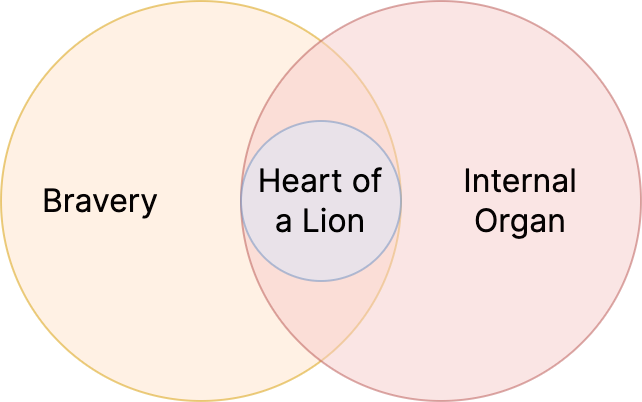
- The setup (“My grandfather had the heart of a lion”) makes us recognize the first pattern: Brave grandfather.
- The punchline (“and a lifetime ban from the Central Park Zoo”) makes us switch to the second pattern: Grandfather holding an actual heart of a lion.
- The “Heart of a lion” is the common aspect, one thing that has two wildly different interpretations, one element that belongs to two entirely unrelated patterns.
The two patterns must be connected by one thing they have in common - “Common Aspect”. The Common Aspect is one thing with two interpretations that belong to two wildly unrelated patterns.
The common aspect is often a word in the setup that has two different interpretations:
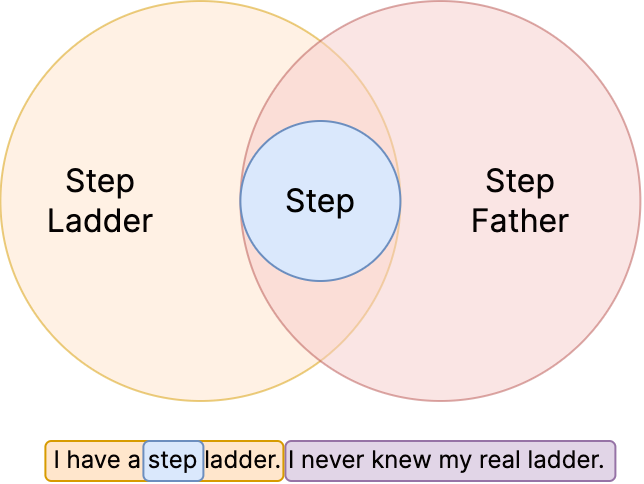
But it doesn’t have to be based on words. You can reinterpret any aspect of the pattern evoked by the setup:
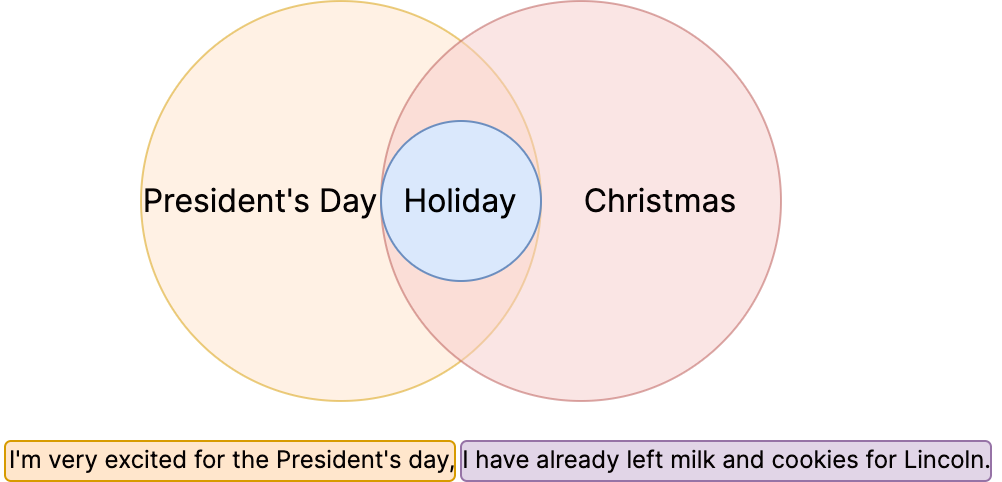
In this case, the word "Holiday" isn't present in the setup, but it is an aspect of a pattern that our brain recognizes when it hears the setup.
This isn’t limited to wordplay based jokes, the common aspect and the patterns can be abstract ideas, or even images:
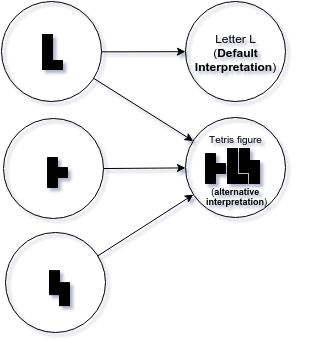

Absurd Associations
At the core of any joke is an "absurd association", an unexpected connection between two ideas, two patterns that don’t belong together, but have one thing in common - the common aspect, the one thing with two interpretations. It's like rhyming ideas.
To write a joke, we need to find two patterns that are connected by one thing. Then we can write a setup - a statement that leads people to recognize the first pattern, and a punch line - a statement that makes them switch to the second pattern.

The less two patterns belong together (the “farther” they are from each other, the more absurd their juxtaposition is), the funnier the joke will be. The better the two patterns are connected (the more Common Aspect makes sense in the context of each of the patterns), the “smarter” the joke will be, the more sense it will make.
When we’re looking for absurd associations, we want both of the patterns to be closely connected to the one thing they have in common, but be as different from each other as possible:
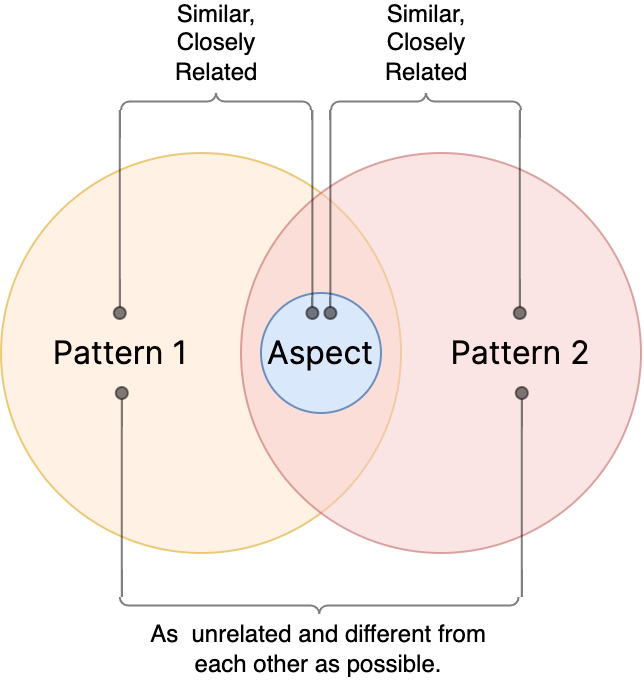
For example, “Cat” - “Paws” - “Dog” is a valid association, but it’s not funny or interesting, it’s too obvious. “Cat” - “Nine Lives” - “Video Games” is much better, because we don’t normally associate cats with video games.
Aspects
So we need to be able to find absurd associations, surprising connections between unrelated ideas. To do that, we need to understand aspects.
All patterns are made out of smaller patterns, and are a part of bigger patterns.
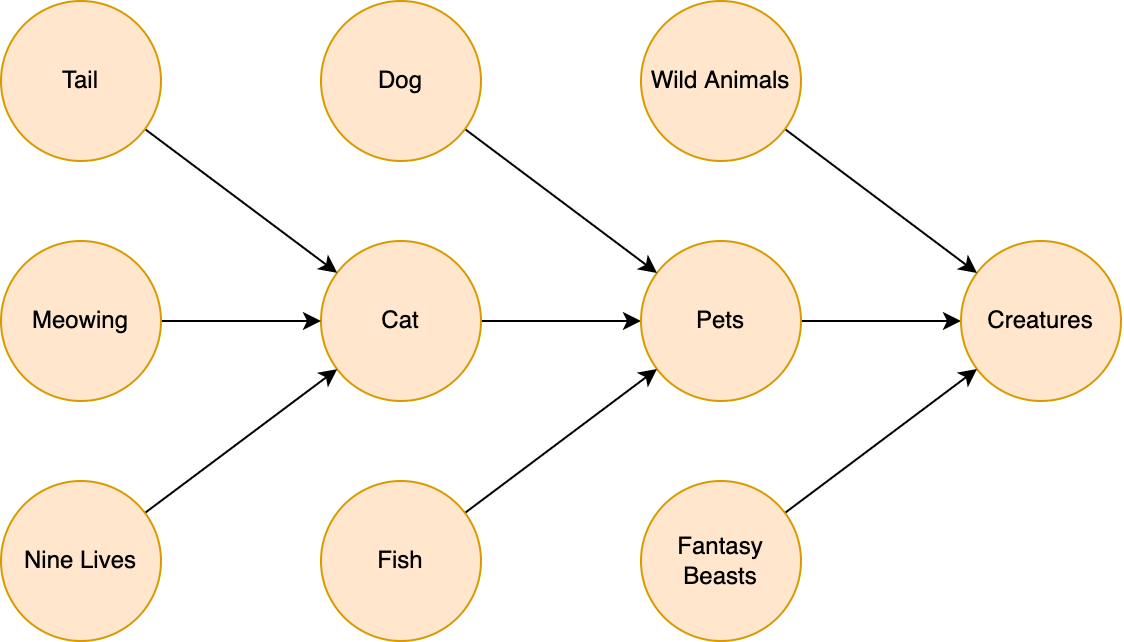
Any pattern is made out of many smaller patterns, and is a part of many bigger patterns:
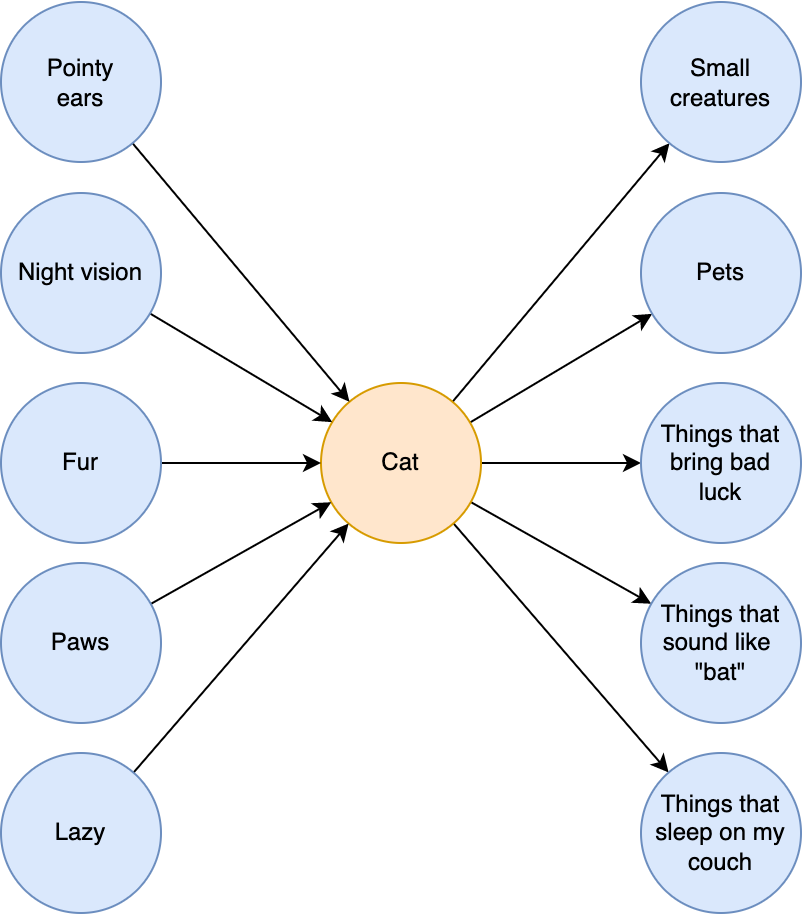
To find interesting associations, we need to take an aspect out of context, look at it separately from the pattern, and then find a different pattern this aspect belongs to:
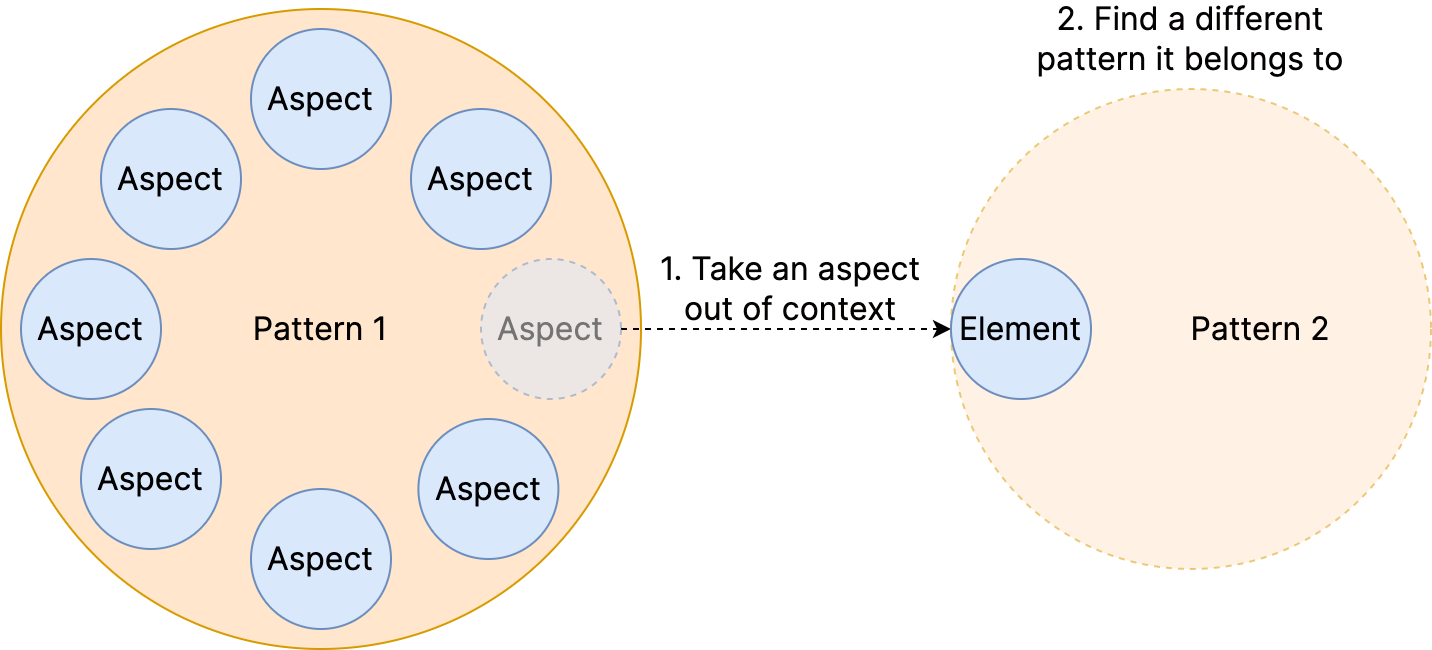
For example, with the cat:
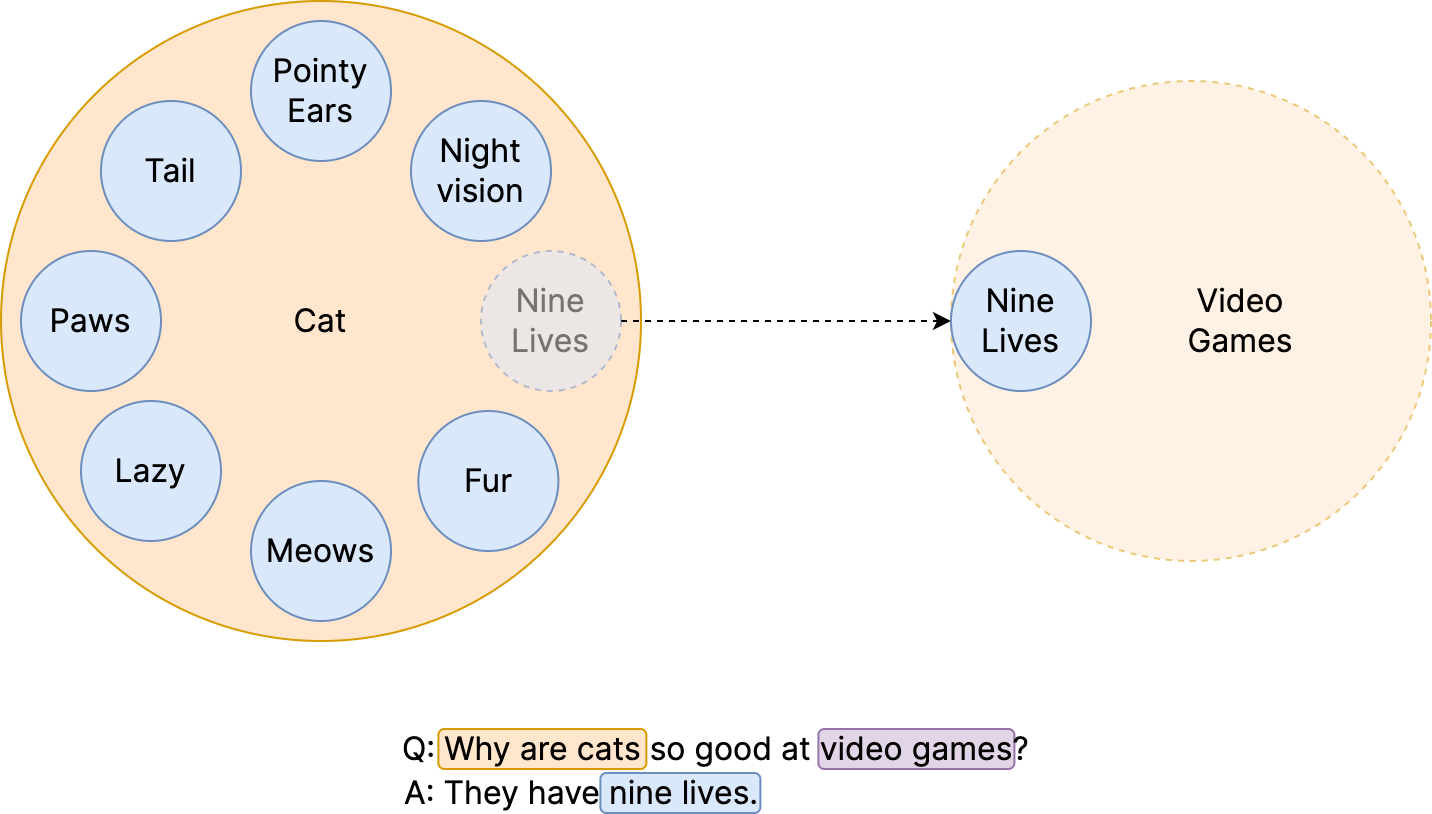
Our topic is “Cat”. We list aspects, and take one out of context “Nine Lives”. Then we’re looking for other patterns the “Nine Lives” aspect belongs to, that are entirely unrelated to the original “Cat” topic, and we find “Video Games”.
So “Nine Lives” is the one thing with multiple interpretations we were looking for.
In our workshop we have an exercise that shows you how to break down a pattern into multiple aspects in more detail, and gives you a few examples:
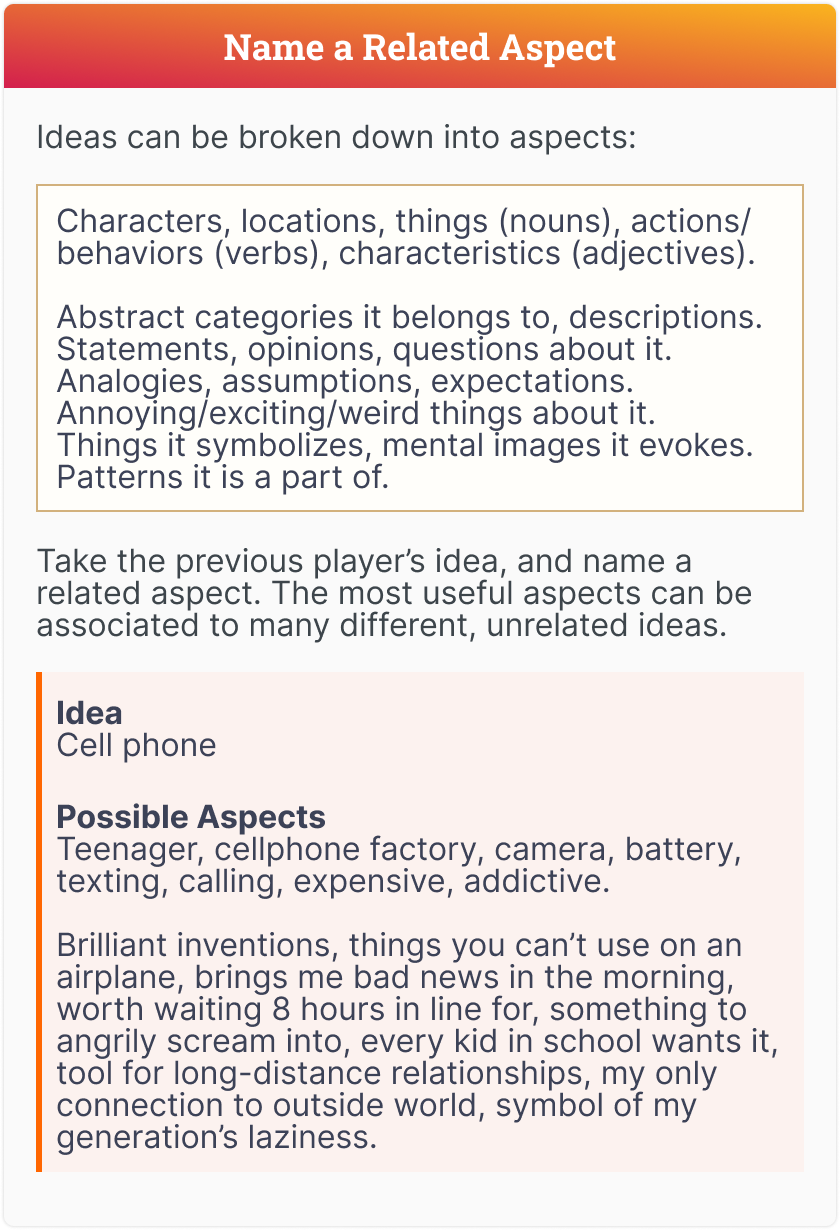
Mixing Patterns
Once we have an absurd association, a surprising connection between the two patterns, the only thing left is to combine these patterns together.
We do that by taking an aspect of one pattern, and applying it to the other pattern:
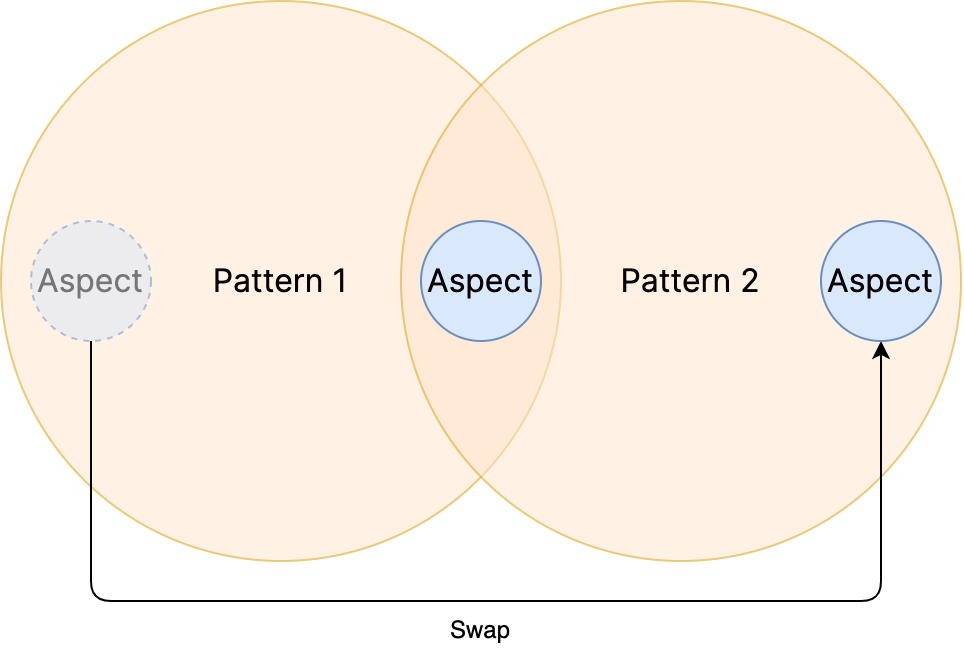
Like so:
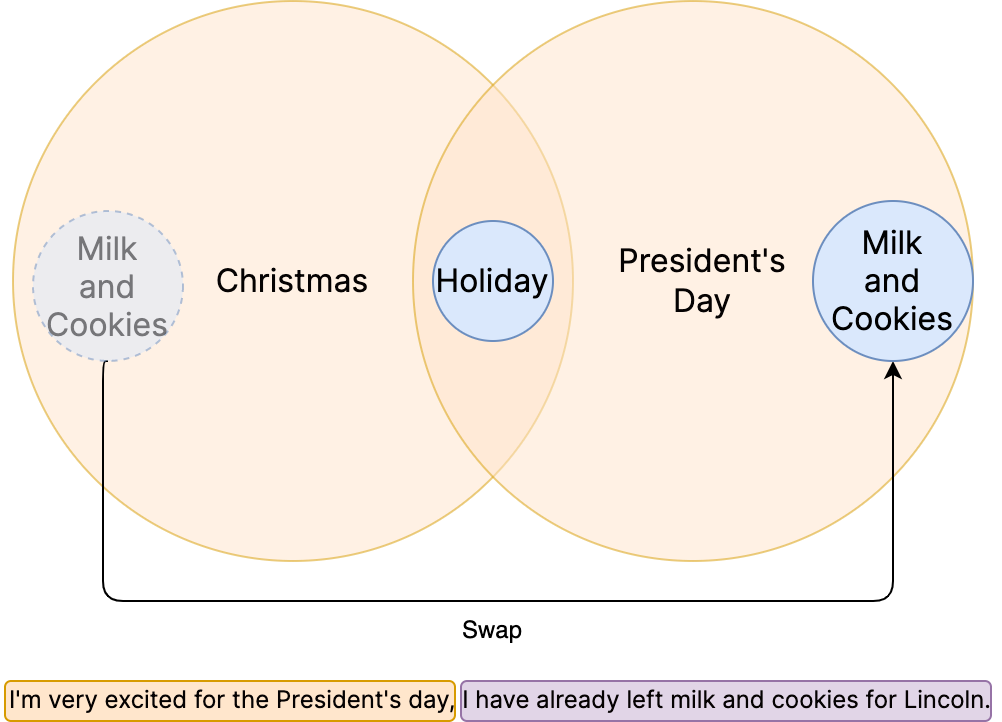
Joke Examples
And here are a few jokes that were created using this method:
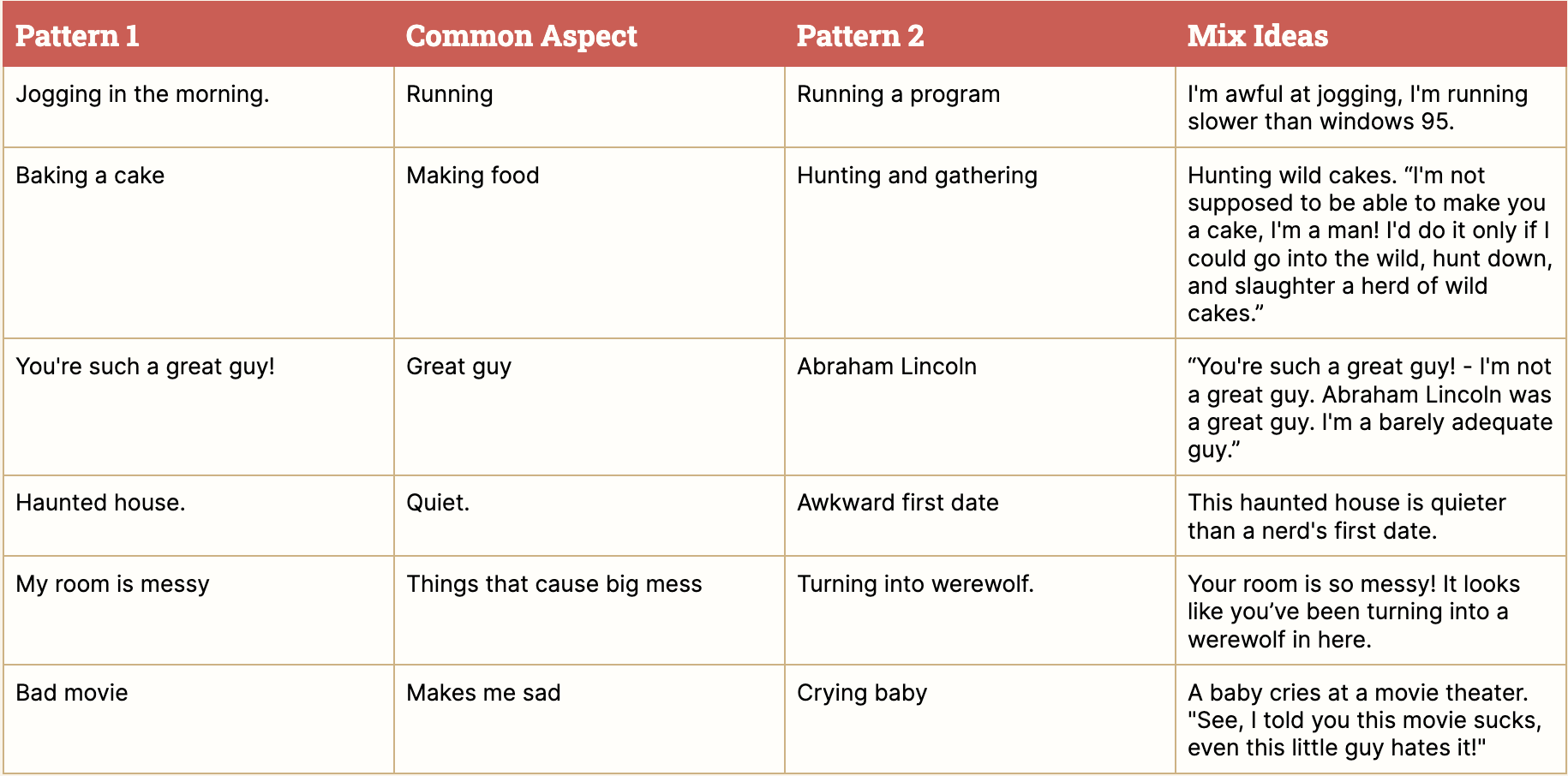
Expressing Funny Ideas
Once you found a funny idea, it can be expressed in multiple different formats - as a stand up style one-liner joke, a dialogue exchange, a webcomic, an improv scene, a comedy sketch.
For example, a joke about the wild cakes from before:
I'm not supposed to be able to make you a cake, I'm a man! I'd do it only if I could go into the wild, hunt down, and slaughter a herd of wild cakes.
Can also be expressed as a comedy sketch.
How to write Comedy Sketches
Read the post on writing comedy sketches here.
Contact me
Do you have any feedback on these ideas? Questions, or ways to improve them?
Send an email to lumenwrites@gmail.com, or connect with me on Discord - lumen#7925 .
Join our community
Join our discord community to participate in our comedy writing, improv, and roleplaying workshops.
Everything below is a work in progress (I need better explanations and examples to express these ideas clearly, but I figured I'll share the notes I have anyway).
Comedy is search
Comedy is search, you're searching through a network of ideas, trying to find find an unexpected connection between wildly different patterns.
As you search, not all of your attempts will pay off, there are many instances where there just isn't an interesting connection between patterns. That's okay, it simply takes time to run through a few dozen ideas until you find an interesting one.
Advanced methods of finding jokes
Taking an aspect out of context, and finding a second pattern it belongs to is the most straightforward way fo finding those connections.
But there are other options.
Association Chains
You can take two random, unconnected patterns, and try to find a common aspect between them.
For example, take two random topics "Athletes" and "Trains". List the aspects of each of these topics, and see if you can find a way to connect them, find something they have in common.
Athletes are training (sounds like a train), trains can run on time (athletes run).
So we end up in the same situation - absurd association between unrelated patterns. And from this, we can write a joke, like:
Two guys walk out of a gym. Guy 1: Oh, man, I feel like I've been ran over by a train. Guy 2: I guess that's why they call it training.
Absurdify and Justify
Another way of finding interesting connections is to take one of the aspects, and make it absurd - reverse it, exaggerate it, or replace it with with something unexpected, something that doesn't belong with the pattern.
Once you have an absurd version of the aspect, find a second pattern where this absurd version fits and makes sense.
Pure Absurd Jokes
There's a category of jokes I didn't mention before that I call "Pure Absurd" jokes, which have no "Common Aspect" - just two patterns that don't belong together smashed together, with no clear association between them. Sometimes doing the stupidest thing that makes the least sense possible is just funny, there's no more structure to it.
Some examples: The Pimparoo, Iraq Lobster, Hitler Juggling Fish.
Improving Jokes
The farther apart two patterns are from each other, the more different they are, the less they belong together, the more contrast there is between them - the funnier the joke will be.
The more patterns have in common, the closer they are associated to the common asepct, the more connections they have between them - the "smarter" the joke will be. Strongly connected jokes make more sense, they're more interesting.
So two main ways of improving jokes are:
- Heightening the contrast between the two patterns. You can do that by exaggerating one of them even more wildly, picking patterns that are farther away from each other. Or you can swap the aspects that are more absurd and specific, taking an aspect of one pattern that belongs with the second pattern as little as possible.
- Making stronger connections between the patterns by searching for more aspects they have in common. Explain and justify the connection between patterns in a way that makes more sense.
The simplest way to connect two patterns is by finding words that have multiple meanings, and connecting the two different interpretations of the word. But you can also search for more abstract and unexpected connections, look for aspects that are less obvious.
Some jokes have multiple punch lines (called "tags"). To create a tag you need to swap more than one aspect, come up with more examples of applying one pattern to another.